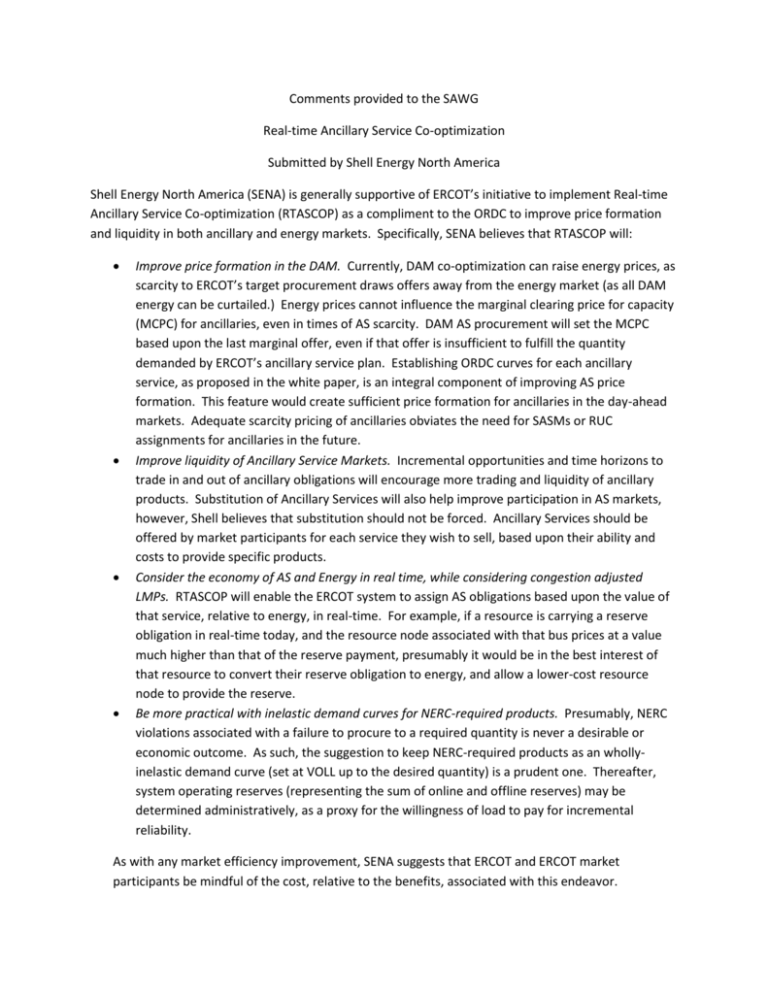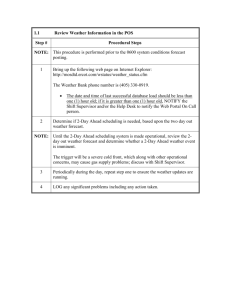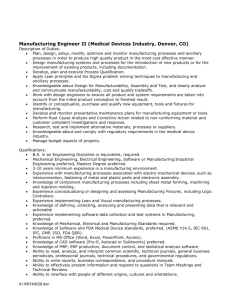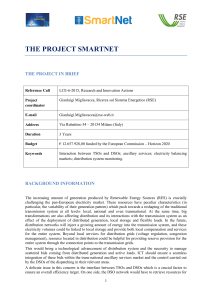RTASC SENA Comments
advertisement

Comments provided to the SAWG Real-time Ancillary Service Co-optimization Submitted by Shell Energy North America Shell Energy North America (SENA) is generally supportive of ERCOT’s initiative to implement Real-time Ancillary Service Co-optimization (RTASCOP) as a compliment to the ORDC to improve price formation and liquidity in both ancillary and energy markets. Specifically, SENA believes that RTASCOP will: Improve price formation in the DAM. Currently, DAM co-optimization can raise energy prices, as scarcity to ERCOT’s target procurement draws offers away from the energy market (as all DAM energy can be curtailed.) Energy prices cannot influence the marginal clearing price for capacity (MCPC) for ancillaries, even in times of AS scarcity. DAM AS procurement will set the MCPC based upon the last marginal offer, even if that offer is insufficient to fulfill the quantity demanded by ERCOT’s ancillary service plan. Establishing ORDC curves for each ancillary service, as proposed in the white paper, is an integral component of improving AS price formation. This feature would create sufficient price formation for ancillaries in the day-ahead markets. Adequate scarcity pricing of ancillaries obviates the need for SASMs or RUC assignments for ancillaries in the future. Improve liquidity of Ancillary Service Markets. Incremental opportunities and time horizons to trade in and out of ancillary obligations will encourage more trading and liquidity of ancillary products. Substitution of Ancillary Services will also help improve participation in AS markets, however, Shell believes that substitution should not be forced. Ancillary Services should be offered by market participants for each service they wish to sell, based upon their ability and costs to provide specific products. Consider the economy of AS and Energy in real time, while considering congestion adjusted LMPs. RTASCOP will enable the ERCOT system to assign AS obligations based upon the value of that service, relative to energy, in real-time. For example, if a resource is carrying a reserve obligation in real-time today, and the resource node associated with that bus prices at a value much higher than that of the reserve payment, presumably it would be in the best interest of that resource to convert their reserve obligation to energy, and allow a lower-cost resource node to provide the reserve. Be more practical with inelastic demand curves for NERC-required products. Presumably, NERC violations associated with a failure to procure to a required quantity is never a desirable or economic outcome. As such, the suggestion to keep NERC-required products as an whollyinelastic demand curve (set at VOLL up to the desired quantity) is a prudent one. Thereafter, system operating reserves (representing the sum of online and offline reserves) may be determined administratively, as a proxy for the willingness of load to pay for incremental reliability. As with any market efficiency improvement, SENA suggests that ERCOT and ERCOT market participants be mindful of the cost, relative to the benefits, associated with this endeavor. Detailed Responses to Whitepaper Questions: 1. Dealing with DA Ancillary Service Insufficiency The whitepaper poses numerous process questions related to day-ahead ancillary service insufficiency. SENA believes that this outcome is currently unprecedented and likely extraordinarily rare in the future. If co-optimization includes product specific ORDC curves as part of the DAM, the likelihood of insufficiency should be further diminished. Nevertheless, SENA recommends that ERCOT allow day-ahead shortfalls to be carried into real-time only to the extent that ERCOT is comfortable with the deficiency. ERCOT may allow this shortfall to remain unaddressed day ahead if they have confidence that sufficient real-time offers will exist in the next operating day. Similarly, if ERCOT believes the deficiency will not adversely impact reliability, then they may proceed to either reduce the quantity required or fill the deficiency in the next operating day. RUC for ancillaries should be reserved exclusively for instances where failure to do so would materially impact reliability. Additionally, The SAWG developed sufficient substitutability rules to further mitigate the likelihood of a single or multiple product deficiency. SENA generally supports the diligence of ERCOT and SAWG to address this outcome, if and when it occurs. 2. Timelines for updating Ancillary Service Offers As noted in the whitepaper, SAWG intends to further discuss appropriate AS and Energy Offer update timelines for QSEs. Timelines should be sufficient to (1) allow the optimization engine sufficient time to consider the most cost effective solution on a 5 minute basis (2) allow the QSE sufficient time to telemeter resource status changes and their associated ability to provide a service if that were to change in real-time. 3. Load Resource Deployment for RRS: Is there different treatment for AS imbalance settlement for failure to provide and deployed resources? What other metrics apart from following Base Points, GREDP, are required? SAWG has proposed that, upon deployment, Load Resources providing RRS be exempted from AS imbalance settlements. Unlike traditional resources converted to energy, load resources have provided their service by means of curtailment. This curtailment is not monetized like a traditional reserve converted to energy services. Rather, Load Resources (1) incur their opportunity cost for the duration of the deployment (2) continue to provide a reserve service in the form of curtailment, (3) do not necessarily require that ERCOT re-procure their deployed obligation. As such, it seems to be reasonable to exempt Load Resources from AS imbalance charges throughout the duration of their deployment (in the case of RRS, up to three hours.) Thereafter, Load Resources failing to restore load to provide their obligation for the operating hours of their obligation should be subject to AS imbalance charges. 4. Ramp Rate sharing between energy and AS: SENA supports further discussion on how to share ramp rates between energy and ancillary services. At this time, it is unclear how this will be an obstacle. Since there is no longer a HASL/LASL within real-time ancillary service co-optimization, and all capacity is essentially available for either energy or reserves, SCED should be capable of making AS and Energy assignments that would dispatch real offers in lieu of the dispatch of the power balance penalty curve.





